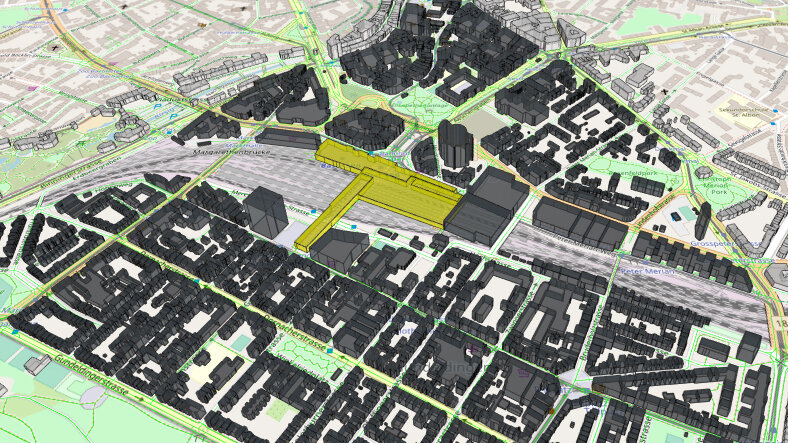REMoD – Railway Stations as Energy and Mobility Hubs
Duration /
2020-2021
Funding /
ETH Zurich
A/S Team /
M. Mosteiro Romero, C. Deb, A. Bufacchi, A. Schlueter
Key Partners /
SBB
Railway stations link two sectors highly relevant for the transition of the energy system, building and mobility. Both are closely connected, however they are often treated and researched separately. Investigating the connection between them allows to identify interactions and synergies that support the reduction of energy consumption, and the increase of energy efficiency and the share of renewable energy produced and consumed.
The goal of the research project is to investigate the potential of railway stations to act as mobility and energy hubs, generating and distributing renewable energy to consumers such as buildings, electric buses, cars and trains. Due to the mixed characteristic of demand and supply of different services at railway stations, synergies between load and generation could be utilized, and, in the future, systematically expanded by providing additional services and infrastructure. This would potentially allow a faster track to carbon reduction and for reducing investment cost.
To approach this, this project is structured along the following steps. First, load profiles of building end use, electric vehicles, electric busses and trains are collected. The potential for installing photovoltaic (PV) panels on roofs, façades and infrastructure in the context of a railway station is assessed and supply profiles are derived. Subsequently, aggregated load profiles are compared to supply profiles of PV generation, aiming to identify synergetic combinations of demand and supply. Finally, the findings will be translated into structural measures to define ideal combinations of building end uses, mobility services and operational measures. The combination of measures identified can then be mapped onto existing typologies of railway stations to identify most suitable candidates for the implementation of measures.
The outcome of the pilot project aims at delivering insights at the conceptual level about the potential of railway stations to offer complementary building and mobility services that, from an energy point of view, are synergetic, and thus allow to increase the share of renewable energy utilized, the reduction of infrastructure costs and an overall reduction of carbon emissions.
Using the City Energy Analyst developed by A/S to simulate district energy demand and solar potential for different case studies.




